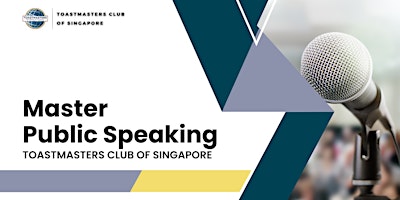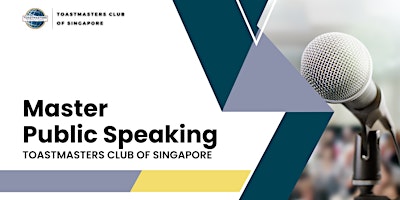This is Part 2 of Tricks to Injecting Humour In Your Speech…
Previously, we talked about the 5 of the 8 frequently asked questions about humour. In this article, we will continue to answer the remaining 3 questions:
- When to use humour?
- What happens if there is no laughter?
- Where can you find humour?
How to Use Humour?
If you are in doubt about your humour, don’t use it. Please remember that not every speech requires humour. It is also not necessary to use humour to break the ice with the audience. However, if you wish to use humour, then follow the guidelines below.
The guildelines are:
- Write down the humourous piece and memories it, When you present it, speak naturally in a conversational tone. If you are nervous and you have trouble remembering it, then it is better to forgo the humour.
- Try to find a suitable place in your speech to fit in the humour. The humour must tie in with the point you are emphasizing or link with the next comment. Do not make a joke or give a humourous comment just because you like it. Humour has to be relevant. You are not there to be a stand-up comic but to present a speech.
- Customise your humour for the event or occasion is most appropriate. For example, if the event is for salespersons, then your humour or joke is evolved around sales and salespersons.
- Personalize your humour to poke fun at yourself or someone who is popular or well-known in the event.
- Find the “in” jokes for the audience. You will instantly receive warm response for that.
- Especially, when you are a foreign speaker, please check with the organizer and research for the “in” things or jokes.
- Avoid ethnic or cultural jokes, try to be sensitive about this segment of the people. Humour has to be clean and understood by all.
- Tell short humourous story is more effective than a long story. Speak slowly and clearly, and make sure it is loud enough to be heard.
Use The Right Humour Targets
Humour is laughing at something or someone (like the speaker). It must have a target. InAmerica, politicians and celebrities are the most popular targets. The more popular they are and the more people target them. Be careful in the selection of targets. Sometimes it can misfire. Avoid using the audience, females and the sacred cows like religion and sex. If you aim at someone among the audience whom you know and is happy to take a punch, then the audience will laugh and your target is correct.
The Best Humour Targets
1. You, The Speaker
You are the best target because you are responsible for yourself. If you can accept the feeling that the audience is laughing with you, then you have managed to put the audience at ease. This is called self-deprecating humour.
Here is a classic example:
Just before my turn to speak; I was pacing to and from in a room. Suddenly a lady came behind me and said, “ Are you nervous before your speech?”
I said, “No, not me, I don’t get nervous.”
“Then, what are you doing in the ladies room?” she said.
2.Superiority Figures
Anyone who holds a position of authority, such as bosses, government officials, teachers, or rich people are perceived as leaders.Americahas a culture against authority and therefore speakers use humour to target at authority. In the Asian context, they respect the elders and authority, therefore not many Asian speakers dare to use humour to target at the authority.
Here is an example:
In 1990 when Goh Chok Tong was sworn in as Prime Minister; the next day I called him on the direct line to congratulate him. He picked up the phone.
I said, “Congratulations. Mr Prime Minister.”
He replied, “Oh, I think you’ve got the wrong extension.”
3. People Related To The Speaker
People such as wives, children, in-laws, neighbours, and business associates.
Here are a few examples:
Take my wife for instance, she always asks questions.
Usually when I come home late, she will say, “ What time is it?. Why are you back so late.”
One evening when I returned home at 9 .00pm. She said, “ What time is it? Why are you back so early?”
My wife is a woman of few words. In the morning before I leave for work, she would say: “ Come home early.”
In the evening when I return home, she would say: “Lock the door.”
How To Tell A Humourous Story Effectively
Here are the rules for the amateur to tell jokes or humourous stories
- Memorise the punch line. It is the punch line that gets the laughter. The lunch line must be delivered smoothly and without hesitation.
- Tell a story in the fewest words possible. Remember more words are not better. In fact, more words can be more cumbersome and verbose. Remember KISS – keep it short and sweet.
- Rehearse the story until it becomes second nature. It means that you have to practice and practice to ensure smooth delivery.
- Don’t laugh at your own jokes. It is like applauding yourself.
- Don’t blame the audience if you do not get a response. You may have to change the punch line or the setup. Fine tune the story.
- Personalise your story and put yourself in the story. It sounds real and the audience will believe you.
If you like to further hone your public speaking skills, don’t forget to check out Ernest’s highly acclaimed public speaking courses in Singapore:
- Power Speaking and Presentation
- Overcome Fears of Public Speaking
- How to Become An Effective Master of Ceremonies
Want to learn the proper techniques of public speaking, the tricks and tips to easily changing your style of delivery according to the times and needs of your listeners?
Every speaker is different, so is your audience. Great public speakers not only know how to tell wonderful and convincing stories, they are also great artist in painting images into the hearts of their listeners. And they precisely know how to adjust their speaking styles to suit their audience from different cultures and nations.
In his book, Earnestly Speaking, Ernest will show you how you can hone your public speaking skills to aid your progress in both your professional and personal life.
Earnestly Speaking is the child of Singapore’s best public speaking coach, Ernest Chen. In his book of twenty independent chapters, Ernest will hold you by your hand and walk you through the six different aspects of public speaking -ranging from preparing your speech, deciding on the most appropriate type of speech to deliver to your audience to the different modes of communication and more….
To start your dream of becoming a persuasive and entertaining public speaking without having butterflies in your stomach, visit your local bookstore and get Ernest’s public speaking bestseller, Earnestly Speaking today!








